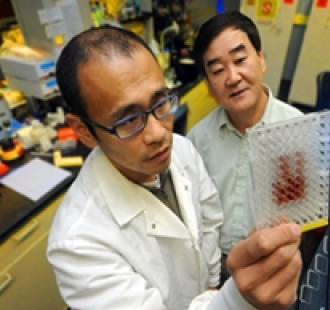Guodong Pan has developed a genetically modified mouse that produces more bone and less marrow fat, suggesting a strategy for fighting rheumatoid arthritis that won’t induce osteoporosis and an accumulation of fat.
Pan and his Georgia Health Sciences University research director Dr Xingming Shi sought to address a medical problem that afflicts patients suffering from painful rheumatoid arthritis. They often seek to control inflammation by taking a class of drugs called glucocorticoids. While they turn down the body’s inflammatory response they also turn on other pathways that lead to bone loss while adding to fat deposits in the bone marrow, contributing to osteoporosis.
Shi, a bone biologist at the GHSU Institute of Molecular Medicine and Genetics, had long linked the mechanism to mesynchymal stem cells which are the precursor to both bone and marrow fat.
“The pathways for bone and fat have a reciprocal relationship, so we needed to find the key that disrupts the fat production pathway, which would then instead encourage bone growth,” Shi explained.
Shi’s 2008 study with cell cultures had shown that a short burst of a small protein called GILZ — a known mediator of the anti-inflammatory response of glucocorticoids — could induce the body to build bone instead of fat.
To conirm that the process would work in a living animal Pan developed a mouse that expresses GILZ permanently.
“When you permanently express GILZ, the fat pathway is suppressed, so the body chooses to produce bone instead,” explained Shi.
“We found that when we overexpressed the protein in these mice, it increased bone formation,” Pan said. “This supports our original hypothesis that GILZ mediates the body’s response to glucocorticoids and encourages bone growth.
“That means GILZ is a potential new anti-inflammatory drug candidate that could spare people from the harmful effects associated with glucocorticoid therapy,” Pan said.
Beyond countering the effects of glucocorticoids, the enhanced GILZ production in the GM mice increased their bone mineral density and bone volume — an effect that could greatly benefit the elderly who frequently suffer from osteoporosis apart from rheumatoid arthritis.
Shi and Pan hope to develop a pill that could produce an effect similar to the ehhanced GILZ production through genetic modificaition.
For his work Pan was honored with the Young Investigator Award from the American Society for Bone and Mineral Research at the society’s annual meeting which was held in Minneapolis from October 12-15.


